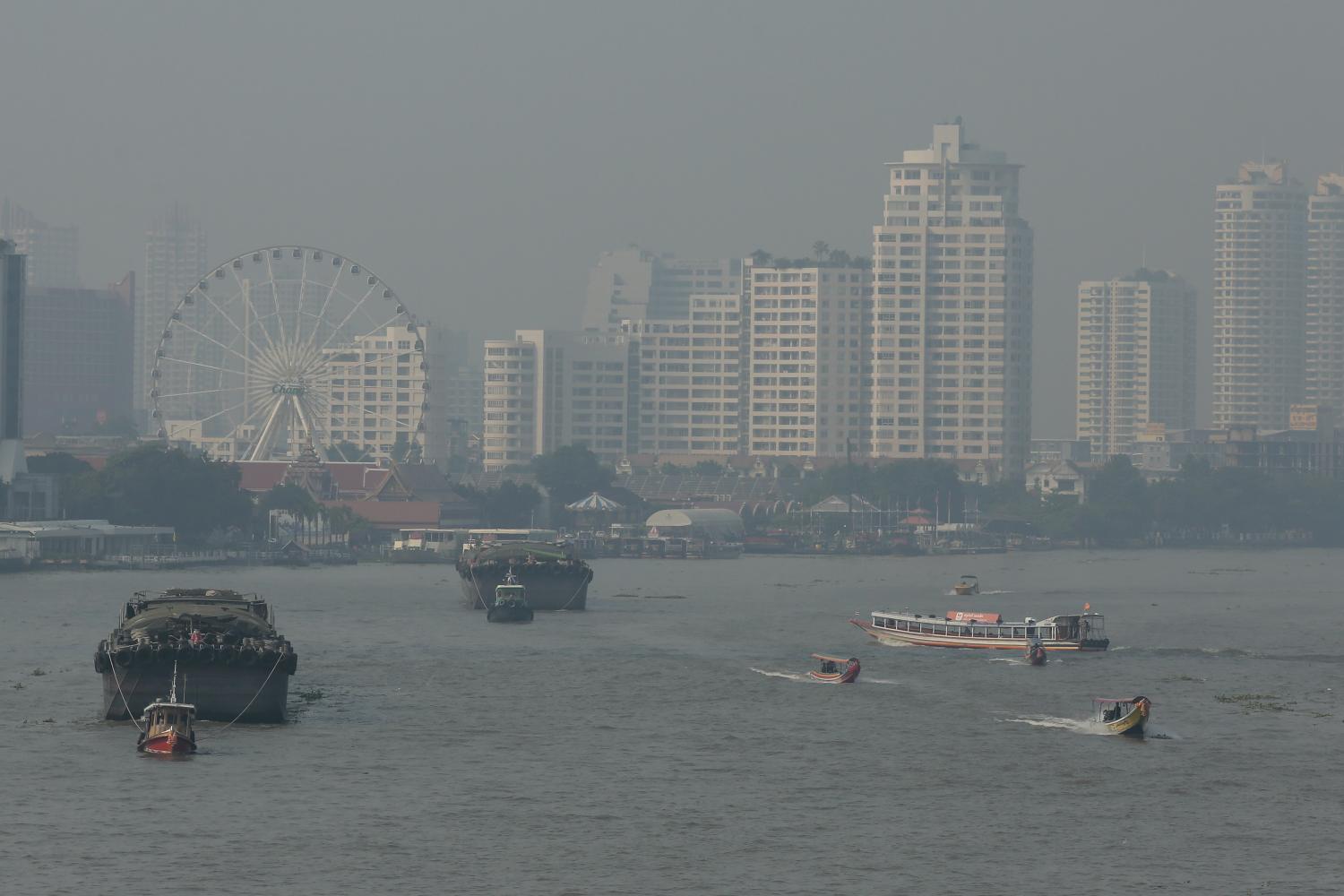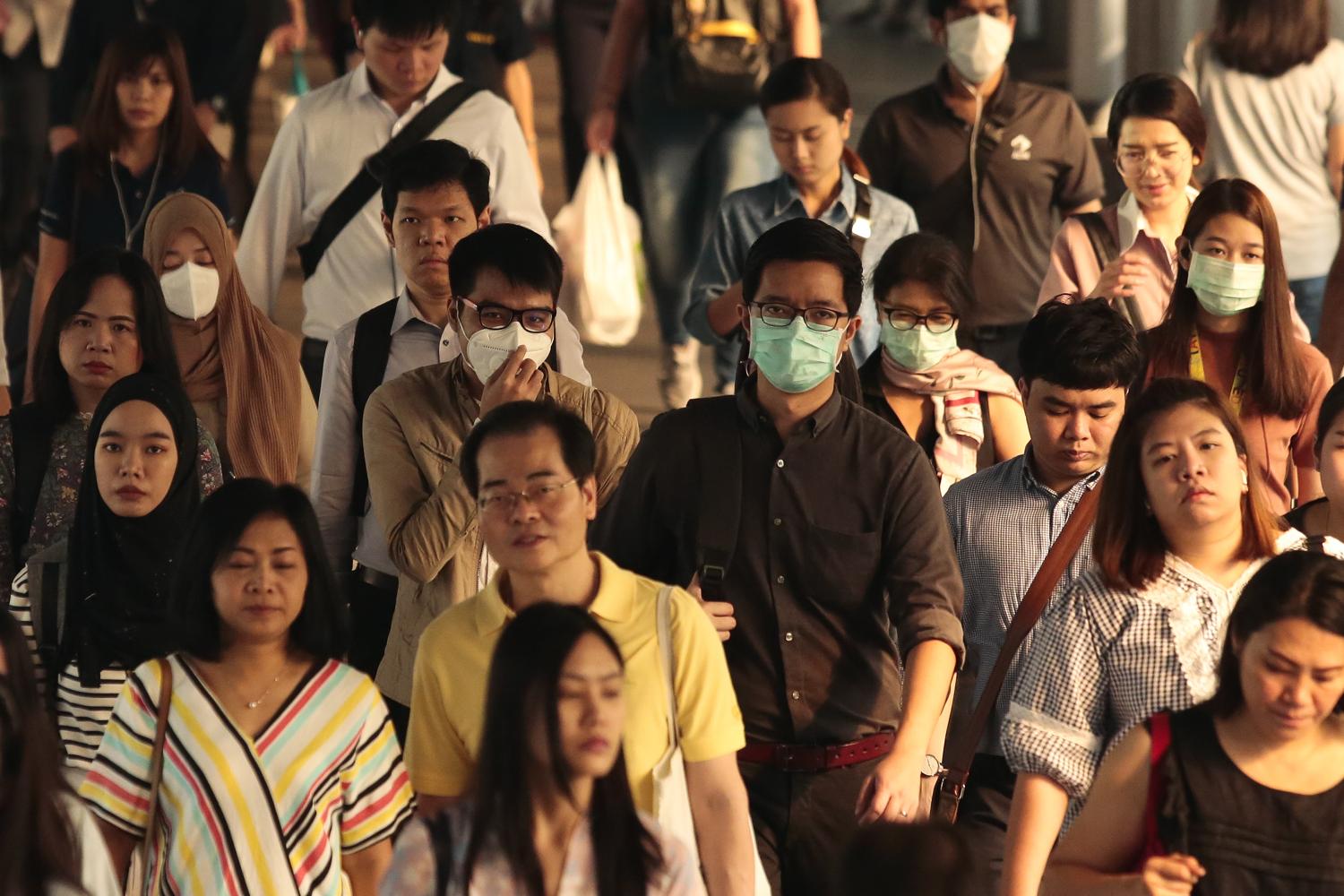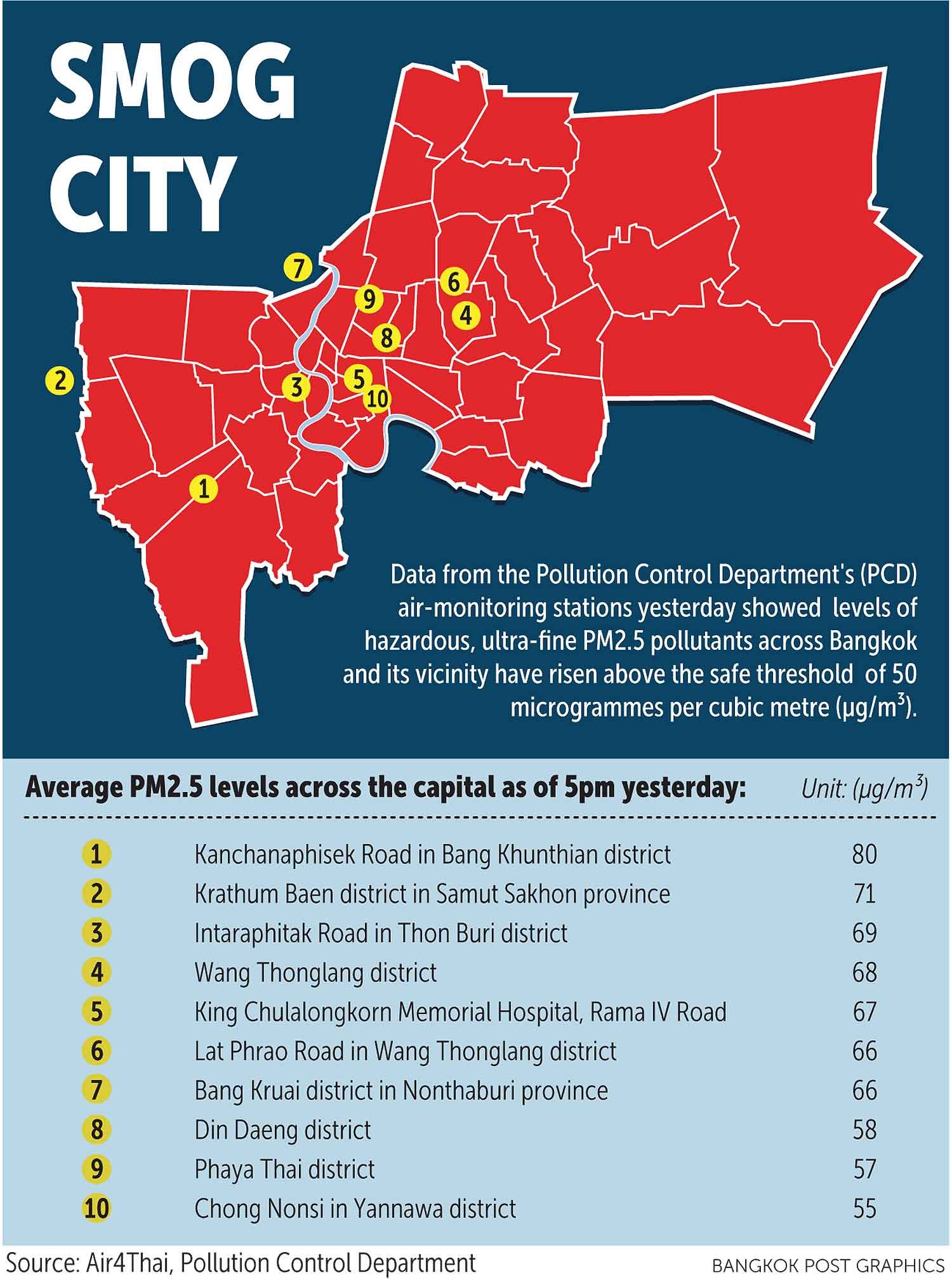
Prime Minister Prayut Chan-o-cha on Monday held an urgent video-conference with 16 provincial governors and related ministries after PM2.5 air pollution exceeded the so-called safe level in Bangkok and surrounding provinces.
Also present were Deputy PM and Public Health Minister Anutin Charnvirakul, Interior Minister Gen Anupong Paojinda, Transport Minister Saksayam Chidchob, and the head of the Pollution Control Department.
Gen Prayut said the conference dealt with preparations, cooperation and measures to combat the air pollution problem.
The urgent meeting was called after fine PM 2.5 dust haze returned to blanket the capital and its vicinity.
Dr Sukhum Kanchanapimai, Public Health permanent secretary, yesterday urged people who worked outdoors to wear face masks and drink 6-8 glasses of water a day as PM2.5 levels rose above the so-called safe threshold of 50 microgrammes per cubic metre (µg/m³).
Water-spraying operations began yesterday in Laksi district and other parts of Bangkok in a bid to reduce PM2.5 levels around schools and major routes such as Chaeng Watthana Road and Vibhavadi Rangsit Road.
Pralong Damrongthai, director-general of the Pollution Control Department (PCD), blamed the pollution on air stagnation air and lower rainfall during the seasonal transition.
Bangkok residents can expect a brief respite today as drizzle, forecast to douse the capital, should reduce PM2.5 levels.
Most PCD air-monitoring stations yesterday showed PM2.5 levels exceeding the 50 µg/m³ reference point deemed a health hazard for vulnerable groups. As of 5pm, the highest PM2.5 level was recorded on Kanchanaphisek Road in Bang Khunthian district, with 80µg/m³.

Some skytrain passengers at Chong Nonsi station in Bangkok wear face masks to protect themselves against PM2.5-laced haze. photos by Patipat Janthong
Central Bangkok also suffered worrying levels of air pollution on Monday. The PCD air-monitoring station next to Lumpini Park, a green oasis in the heart of the city, recorded a PM2.5 level of 67 µg/m³.
Other parts of Bangkok with high levels of PM2.5 haze were Bang Khen, Bang Kholaem, Bang Khunthian, Bang Phlat, Bang Rak, Bang Sue, Bangkok Noi, Bung Kum, Chatuchak, Din Daeng, Khlong San, Klong Toey, Laksi, Pathumwan, Phasi Charoen, Phaya Thai, Samphan Thawong, Sathon, Thon Buri, Wang Thong Lang and Yannawa, districts.
Unsafe levels were also detected in Nonthaburi's Bang Kruai and Pak Kret districts, Pathum Thani's Klong Luang district, Samut Prakan's Muang and Phra Pradaeng districts, Samut Sakhnon's Krathum Baen and Muang districts, and Nakhon Pathom's Muang district.
As of 5pm, Bangkok had the world's worst air quality among major cities, according to data from IQAir AirVisual, behind Vietnam's Hanoi and Chengdu in China.
At just 1/20 the diameter of a human hair, the microscopic PM2.5 dust penetrates deep into lungs, from where it enters blood vessels, leading to respiratory and cardiovascular disease. The dust is emitted by industrial activity, vehicle exhaust, and open burning.
